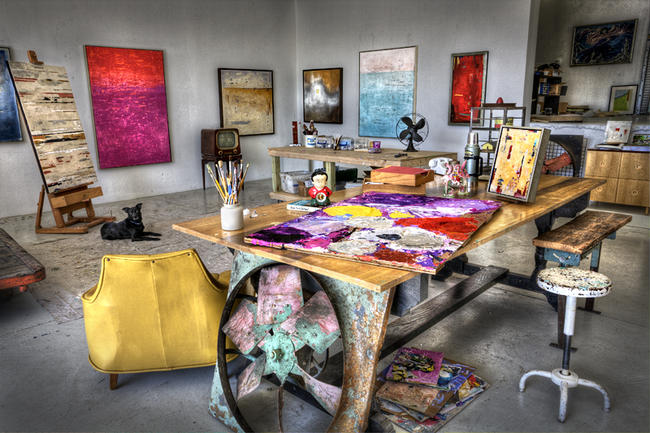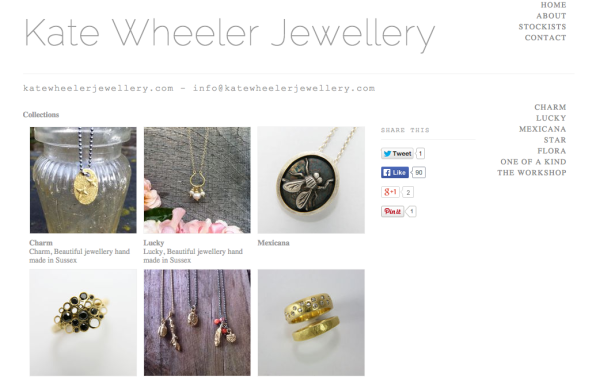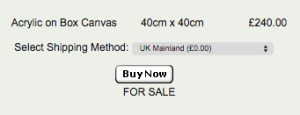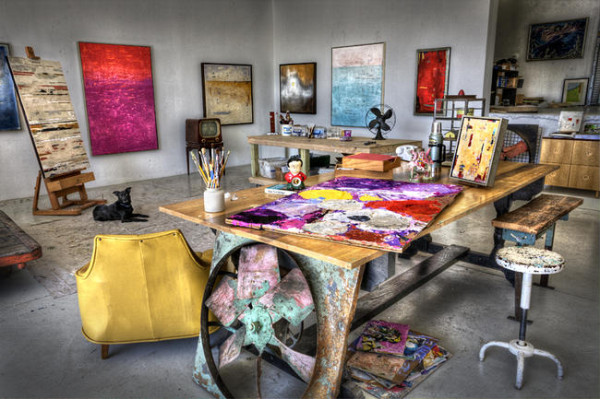A couple of months ago we talked about how to ensure your artist brand is well defined, and how to find your marketing niche. Here we’re going to continue that ethos, and discuss how you can build on your professional image through small yet important changes.
Like anyone selling a product, artists have to work hard to get their work out there. But there’s no point constantly sharing your artwork on social media if it’s photographed badly, links to an out of date page, or is missing detailed information. The first step towards seeming more professional to others is by acknowledging that you are a professional, that your art is your job. Even if you are trying to sell work outside of another job, you still need to get into this mindset. By making the following steps, you’ll instantly be upping your game…
- Set up a LinkedIn account. LinkedIn is the biggest professional-oriented social network, and one that artists often forget about when setting up their various social media pages. Although it may seem a bit corporate at first, it’s actually brimming with curators, galleries, creative entrepreneurs, and most of all, potential clients! Its professional outlook means you can connect with others whilst specifically publicising your accolades – so include exhibitions, commissions, projects and other achievements. It’s also somewhere you can promote related work you’ve done, like holding workshops with specific organisations, running other businesses, or other employment that might assist in your art career.
- Complete your profiles. On any of your social networks, artist profile sites or forums, ensure that your profile includes an image and a filled out ‘about’ section, with a link to your artist website.
- Make sure your website is up to scratch. This means high quality documentation, no spelling mistakes, simple navigation, clearly priced work, and a considered template. Try and step back from your work and see it from an outsiders point of view, or even better, ask someone who’s never seen it to give you some honest feedback. For tips on how to photograph your art, see our post from a while back with detailed advice – Photographing your artwork. For examples of websites that have got it right, take a look through our Art Round blog posts, where we highlight some of the best artist sites on ArtWeb. A great example is Kate Wheeler Jewellery, pictured below:
- Have a professional artist name and stick to it. Refer to your art business under the same name across all of your networks, your website, and your marketing material. By mixing things up, even the difference between say, Dave and David, will confuse your customers and could damage your publicity efforts.
- Have a professional email address. These days it’s fair to say that Hotmail lacks professionalism, Gmail is OK, but having your own website email address is by far the best option (i.e. @mydomain.com). If you have purchased your own domain name, packages often offer this as an additional extra.
- Reply to emails straight away. Leaving people hanging for longer than a day or so gives the impression that you’re unorganised or aren’t really bothered about their enquiry. If you think you might not be able to answer due to anticipated workload, it’s very acceptable to set up an ‘out of office’ automated reply, as this only adds to your professional image whilst taking off some of the pressure.
- Offer a mailing list sign up on your site, and use it for targeted, relevant and regular newsletters. The key is not to overdo it – don’t email people every day as they’ll mark you as spam straight away. Once or twice a month is a good amount, or make schedule based on your specific upcoming exhibitions or events.
- Get a great looking portfolio – both digital and print. Putting together a beautiful portfolio can take a while, but is so very worth it when you’re suddenly asked to send examples of your work to a gallery or potential client. While you might argue that they can visit your website, your portfolio is a place for your absolute star work, and by being able to send one over straight away will do wonders for your professional image. Have a couple of versions if your work appeals to different audiences, and have them saved as web-optimised PDFs. Ideally using a layout programme like Adobe InDesign is ideal, but if you don’t have access to that, you can also export PDFs from Word. Having a printed version is also important for meetings with potential clients and curators. Blurb are great for creating professional and high quality books and portfolios, and also allow you to customise the layout, fonts, and design.
- Get a voice for yourself. Start using social media not only to share your work and updates, but also your views and opinions on current issues in the art world, exhibitions you’ve seen and liked (or not!) By sharing interesting and relevant ideas with your network, you’ll start building a personality behind your art, which is something we’ve highlighted the benefits of previously.
- Add payment options on your website. When selling art online, at the very least, you need to have clear pricing in place so that people don’t have to email asking how much something is. If you really want to go the extra mile, then integrating payment makes it incredibly easy for customers to buy your work. ArtWeb’s Pro plan offers simple credit card integration, so it couldn’t be easier!
- Keep things updated. You might not be able to write a blog post every day, but blogging once a month is better than once a year! If someone visits your site and sees it hasn’t been updated for more than a few months, they’ll most likely assume you’ve moved on to other things. Even if you’ve just updated with a recent exhibition you’ve visited, or an artwork that’s inspired you, it shows that you are still making and working as an artist.
- Keep your studio looking tip top. Studio visits are common for curators, and if it’s at short notice you don’t want to be caught off guard with a messy or haphazard workspace. Take an hour two every week to keep it in order, just in case! We’re not saying hide everything and make it look clinical (it is an art studio after all), but to keep things looking organised, with maybe some work hanging on the walls if you have the space. Painter Ed Nash has taken this approach in the image above.
- Practice talking about your work. You as the artist are the one person who truly knows your art, the meanings, stories, and passion behind each piece. But many artists forget that they need to translate these elements through words, and often this can be in person at a private view or a conversation with a potential customer. Stumbling and forgetting gives an immediate impression that you’re not 100% sure about your own work, even if this isn’t the case. Prepare by having some rehearsed talking points about your art, so you can confidently keep the conversation going. Try talking to others about your work, and get people to ask you some practice questions that might come up (such as the dreaded ‘so what’s it all about?’)
We hope these tips help get you feeling and appearing more professional, both to yourself and to others. If you’ve got any tips you’d like to share, feel free to post your advice in the comments box below.











